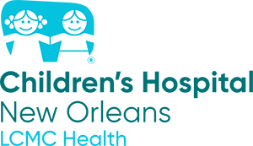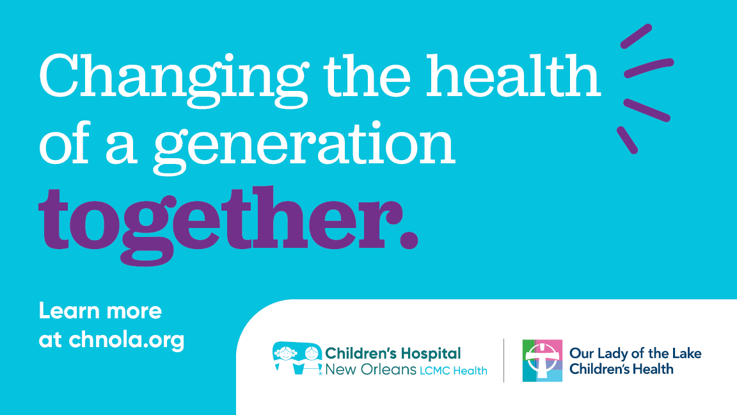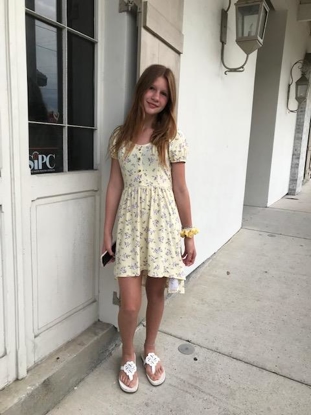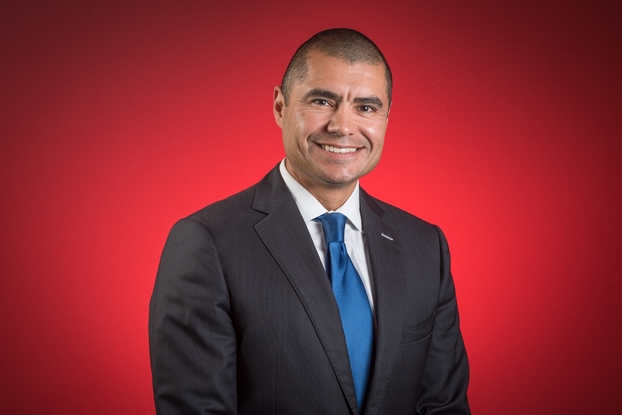Kamian’s Story: A Patient Dreams of Helping Others after Her Own Sickle Cell Disease Journey
- Category: Patient Stories, Hematology
- Posted on:

Twenty-two-year-old Kamian Buggage just started medical school at LSU Shreveport this fall. Ever since she can remember, she always wanted to help others; first by being a friend to kids in her class who didn’t make friends easily, then through dreams of going into nursing, and later, by working as hard as she could to get into medical school.
“I’ve never seen a child like my own,” said her mother, Alicia Buggage. Both of Kamian’s parents work in education and have seen hundreds of students over the years. “She has always been a straight-A student, very inquisitive and unique. And she is the most persistent person I know—she will work to overcome any obstacle put in her way.”
 Kamian has had more than a few obstacles over the years. Shortly after birth, she was diagnosed with sickle cell disease, an inherited disorder affecting a protein called hemoglobin, which is found inside red blood cells and is responsible for carrying oxygen. In a person without sickle cell disease, the red blood cells are round and move easily through small blood vessels to distribute oxygen throughout the body. With sickle cell disease, the hemoglobin is abnormal and causes the red blood cells to harden and become sticky; under a microscope, they are shaped in the form of a “sickle,” which gave the condition its name. When the sickle-shaped red blood cells travel through the blood vessels, they can bunch up and clog blood flow. In addition, the sickle cells die earlier than healthy red blood cells, meaning a person with sickle cell disease is constantly battling a shortage of red blood cells.
Kamian has had more than a few obstacles over the years. Shortly after birth, she was diagnosed with sickle cell disease, an inherited disorder affecting a protein called hemoglobin, which is found inside red blood cells and is responsible for carrying oxygen. In a person without sickle cell disease, the red blood cells are round and move easily through small blood vessels to distribute oxygen throughout the body. With sickle cell disease, the hemoglobin is abnormal and causes the red blood cells to harden and become sticky; under a microscope, they are shaped in the form of a “sickle,” which gave the condition its name. When the sickle-shaped red blood cells travel through the blood vessels, they can bunch up and clog blood flow. In addition, the sickle cells die earlier than healthy red blood cells, meaning a person with sickle cell disease is constantly battling a shortage of red blood cells.
Kamian’s diagnosis showed up on a routine newborn screening. Sickle cell disease is hereditary, and both parents need to be carriers in order for the condition to be passed on.
When Kamian was a baby, treatment for sickle cell disease consisted primarily of penicillin and folic acid every day, as well as regular monitoring for more severe complications. The penicillin helped prevent infections, which children with sickle cell disease are more susceptible to, and the folic acid addressed concerns of anemia, which is also a common side effect. Patients with sickle cell disease are also susceptible to periodic “pain crises” (also known as a vaso-occlusive episode or VOE), which are caused by the sickled cells getting stuck in small blood vessels and blocking blood flow, resulting in levels of pain ranging from mild to severe.
Even as a young girl, Kamian impressed her parents and her care team at Children’s Hospital New Orleans with the strength and perseverance she showed during her pain crisis episodes. But at 9 years old, her physician, Dr. Renee Gardner, MD, a pediatric hematologist/oncologist at Children’s Hospital New Orleans, noticed that she was showing signs of transient ischemic attacks, otherwise known as TIAs or “mini strokes,” which are caused by a temporary disruption of blood supply to the brain and can be a side effect of sickle cell disease.
“She had an MRI and they did confirm that she was having mini strokes,” Alicia said. “We were all surprised because she was excelling at school and showing very few signs that anything was wrong.”
Dr. Gardner started Kamian on monthly blood transfusions to address the TIAs. The transfusions work to lower the abnormal hemoglobin and increase oxygen-carrying capacity throughout her body.
“We did the transfusions for about 8 years,” Alicia said. The family lives in Paincourtville, about 70 miles west of Children’s Hospital New Orleans, where they would travel for the transfusions. “It was a commitment, but they were effective and did what they needed to do.”
Then, in 2017, the U.S. Food and Drug Administration (FDA) approved a drug for pediatric patients with sickle cell disease called hydroxyurea. The treatment had been available to adults since 1998, but this new development was lifechanging for patients like Kamian.
“Kamain started hydroxyurea when she was in high school, which was good timing because her schedule had gotten so busy,” Alicia said. “This drug allowed her to stop the monthly transfusions, which freed up time and really improved her quality of life.”
Hydroxyurea works by making red blood cells bigger and rounder, and by increasing the overall presence of hemoglobin in a body with sickle cell disease. More specifically, the drug helps the body make a protein called fetal hemoglobin (hemoglobin F), which is usually only produced during the fetal stage, before a baby is born. This hemoglobin discourages red blood cells to become sickle-shaped.
“Specialists in the hematology/oncology world were thrilled when hydroxyurea was approved, because this drug can be a truly effective therapy for patients with sickle cell disease,” Dr. Gardner said. “For patients like Kamian, not only does it reduce their risk of complications like stroke and infection, but it works to minimize episodes of pain crises, which can be debilitating and disruptive.”
Alicia said she and her family are grateful for the care they received at Children’s Hospital New Orleans throughout Kamian’s childhood, and especially for Dr. Gardner’s guidance and expertise, adding that those experiences helped guide Kamian toward her dream of becoming a doctor herself.
“She wants to go into pediatrics and care for kids because she can relate to what they’re going through after everything she went through,” Alicia said. “We’re so proud of her. She and her dad talk about biology all the time when she calls home, and we’re so happy for her because she’s found her thing. She knew what she wanted and she went after it.”
 Although Kamian still suffers from the periodic pain crisis, she is thriving in medical school and is looking forward to a future where she can one day help others like her.
Although Kamian still suffers from the periodic pain crisis, she is thriving in medical school and is looking forward to a future where she can one day help others like her.
“She could have a pain crisis and still persevere through whatever she is doing at the moment,” Alicia said. “She will persevere through anything to get to where she needs to get to.”
To learn more about the Children’s Hospital New Orleans Center for Cancer and Blood Disorders, visit https://www.chnola.org/our-services/hematology-oncology/.



